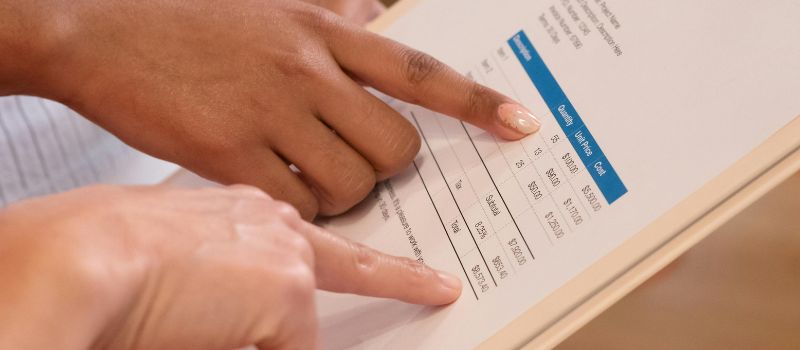Importance of Proper Invoicing in a Sales Tax Audit
During a sales tax audit, presenting the correct invoices in the correct form is of utmost importance. You need to break out the sales tax and other non-taxable charges on the invoice.
If you lump everything together, you will be charged taxes on the gross receipt.
Transcript
Introduction
Hi, my name is Mansoor Ansari and we’re back for another video. So today we’re going to discuss the crux of a sales tax audit which is your invoices. Now this is how you invoice your customers. So watch this.
Example: Invoice A
Let’s call this Invoice A:
-
You sold a chair for $100.
-
You did delivery on that chair for $50.
-
You charged tax worth $10 (assumed correct for the jurisdiction).
-
The total is $160.

This is an example of a really good invoice that you can give to your clients because:
-
The chair that was sold is a tangible item.
-
The delivery fee of $50 is separately listed.
-
The sales tax is clearly broken out.
Common Mistake and Penalty
Let’s assume someone just said this invoice is only worth $160.
The problem: Under a sales tax audit, you get penalized for tax on top of the $160.
In a transaction like this:
-
The delivery fee isn’t even taxable.
-
Why? Because it’s broken out separately and a third-party carrier was used.
It’s not like you got your brother to go deliver the chair for you.
Key Takeaway
Anytime you’re looking at invoices, you’ve got to set them up correctly, otherwise:
-
The auditor is going to assume things like delivery are taxable.
-
Tax will be double taxed.
Frequently Asked Questions
What makes an invoice compliant during a sales tax audit?
A compliant invoice must clearly itemize taxable and non-taxable charges. This includes breaking out the product cost, delivery fees, and sales tax separately. Proper itemization ensures auditors do not apply tax to the entire gross amount.
Why is it a problem to lump charges together on an invoice?
When charges are combined into one total amount, auditors may assume all components are taxable. This could lead to taxes being assessed on non-taxable items like delivery fees, resulting in overpayment.
Are delivery charges always taxable in a sales tax audit?
No, delivery charges are often non-taxable if they are listed separately and performed by a third-party carrier. The key is to clearly separate the charge from the product price on the invoice.
What’s an example of a well-structured invoice?
An ideal invoice would look like this: a chair sold for $100, delivery listed separately at $50, and sales tax shown as $10, totaling $160. Each component is itemized, minimizing audit issues.
What are the risks of incorrect invoicing?
Incorrect invoicing can lead to double taxation, where both the sales amount and additional fees are taxed inappropriately. This increases your tax liability and could trigger penalties during an audit.
Let me know if you’d like this FAQ formatted into HTML or added to a larger content refresh.

